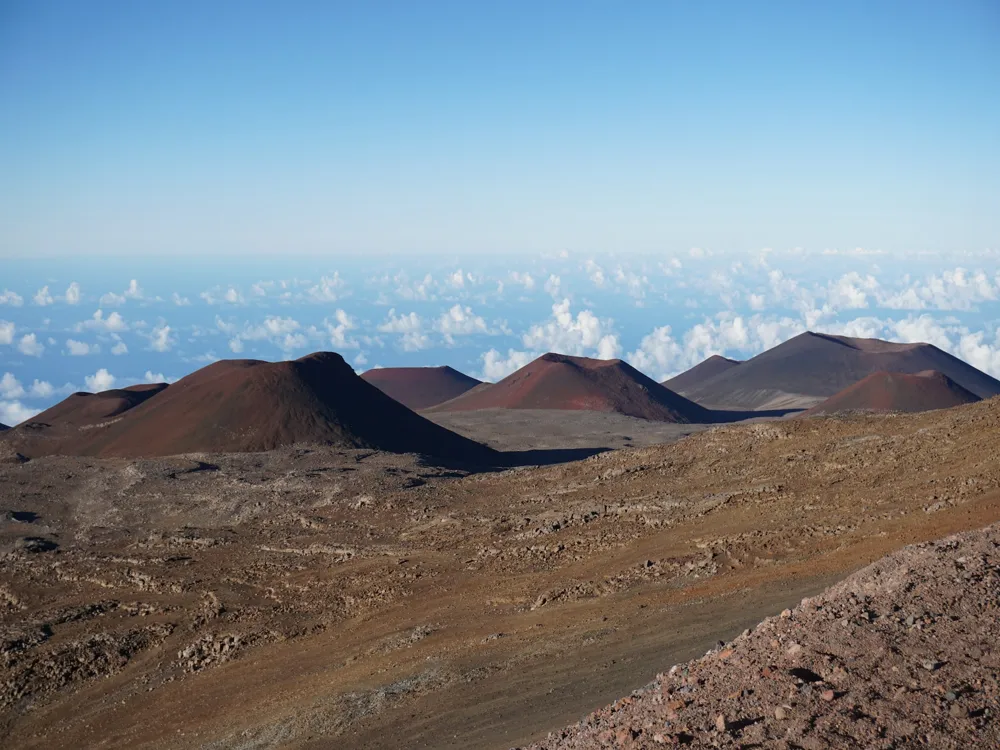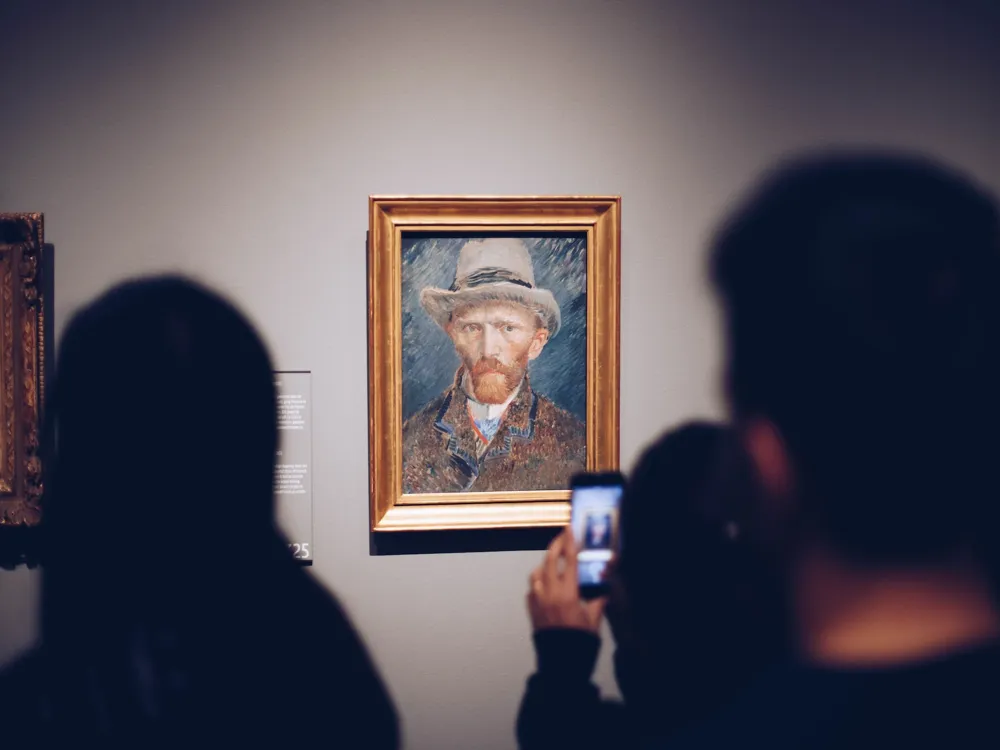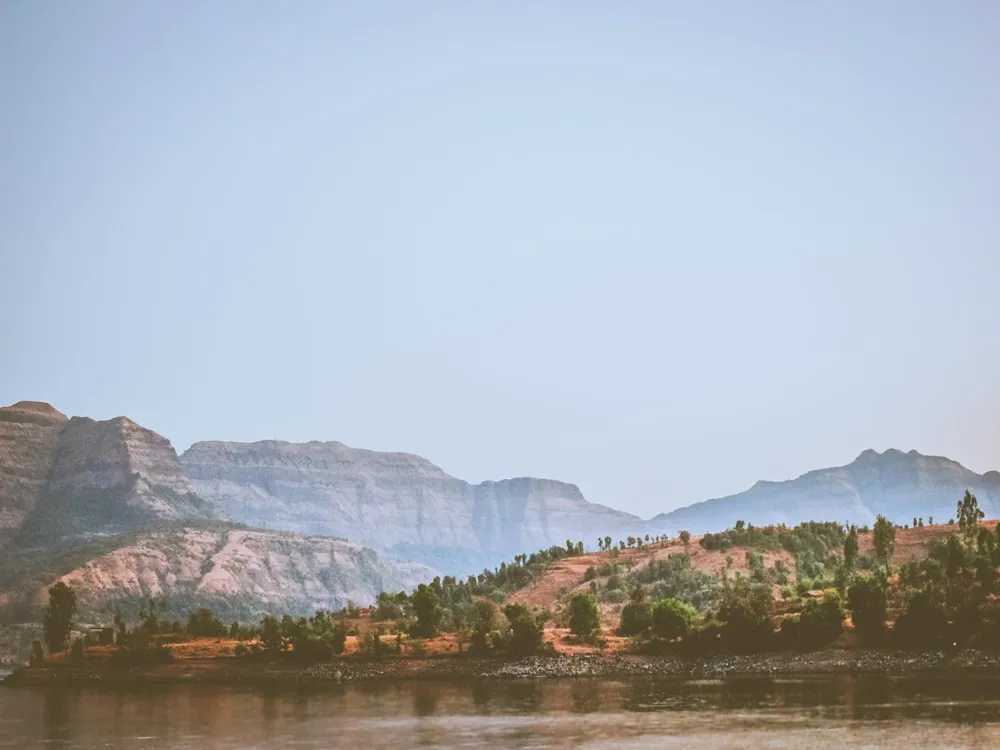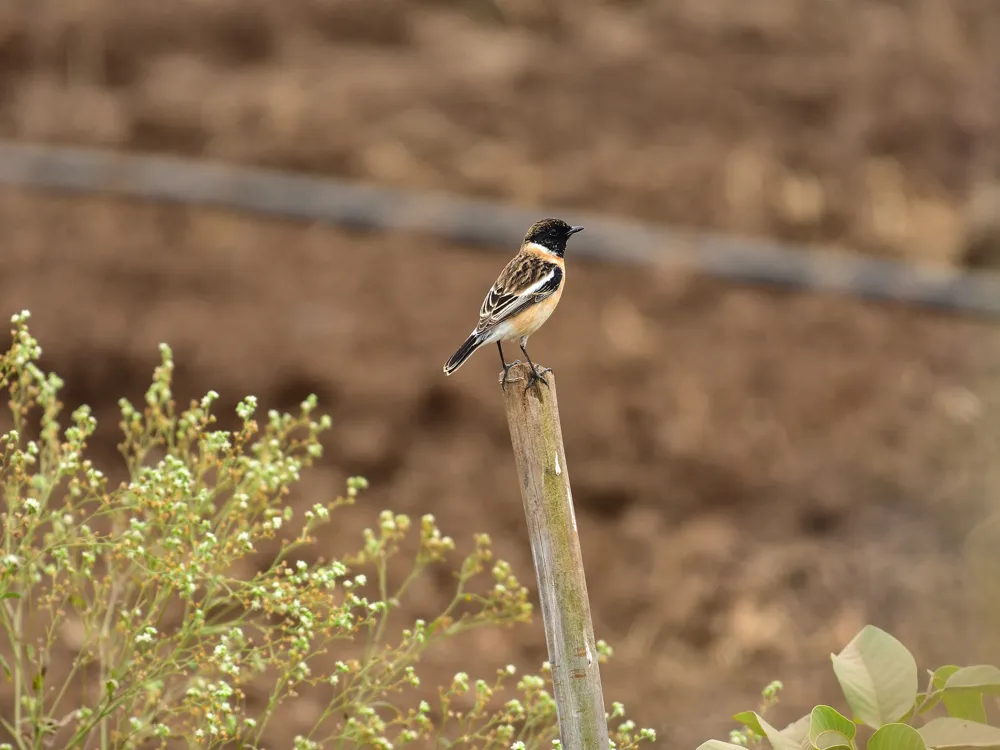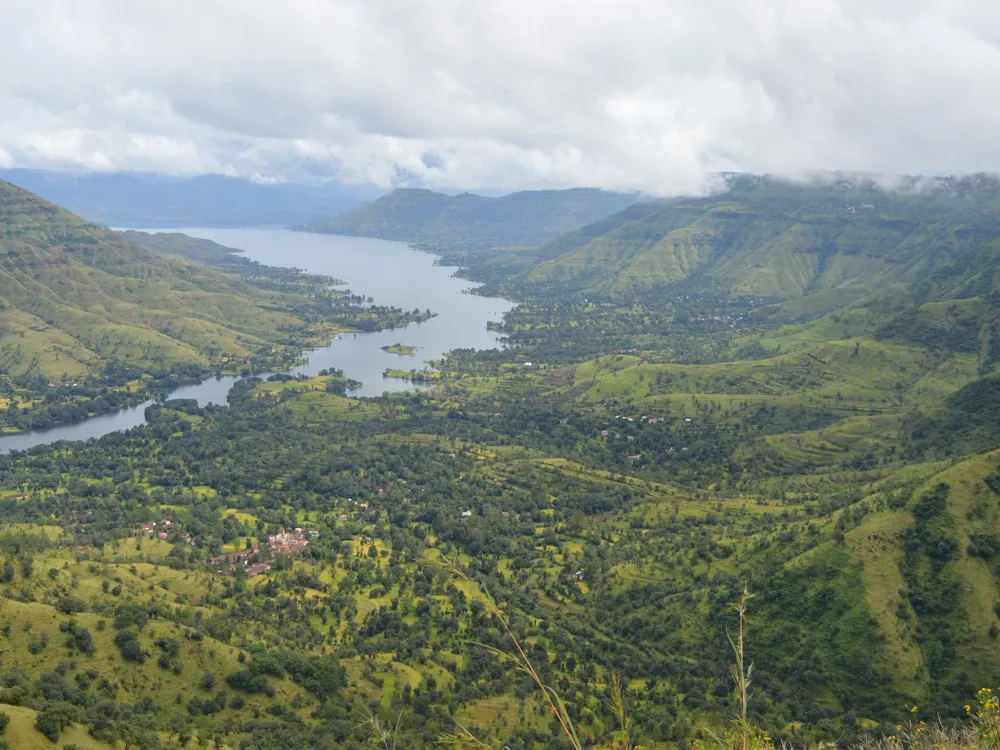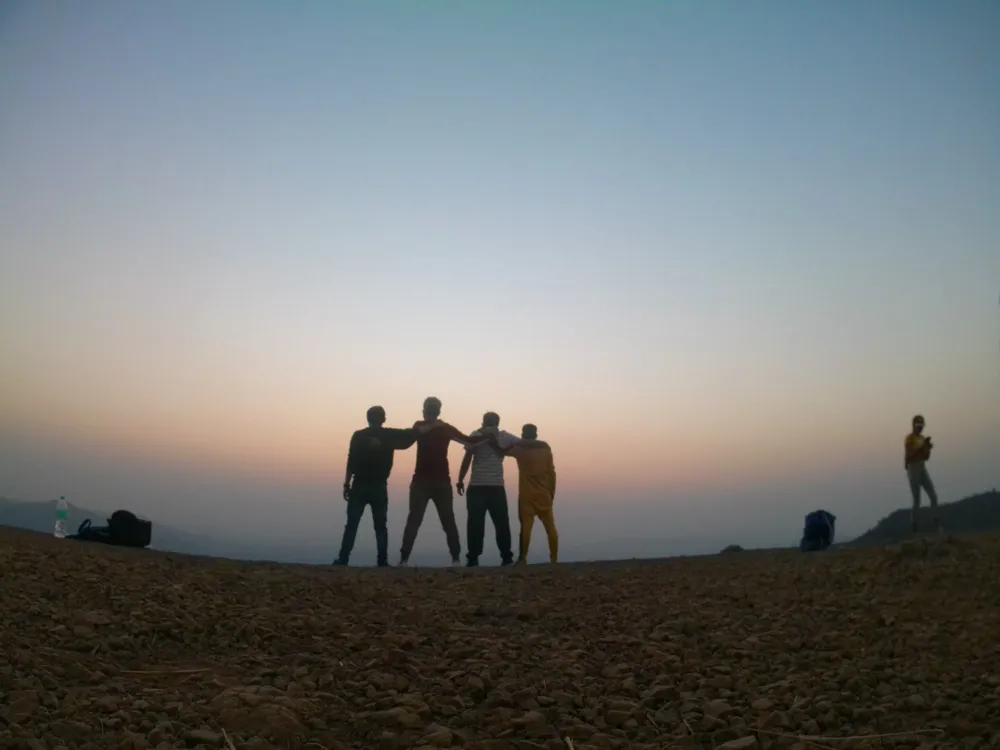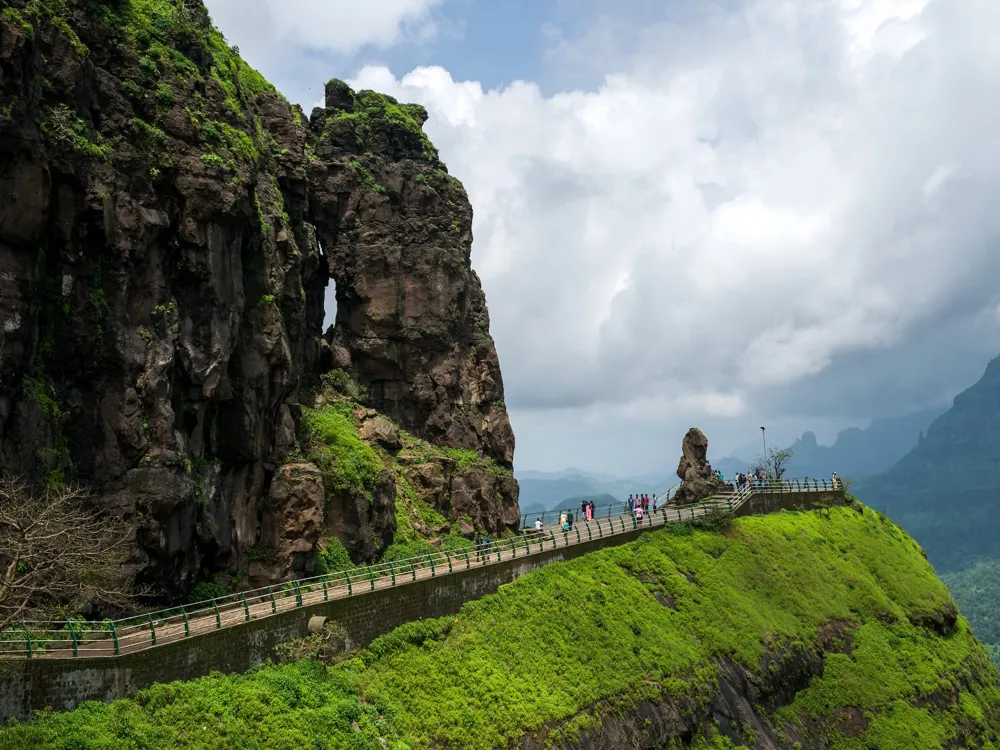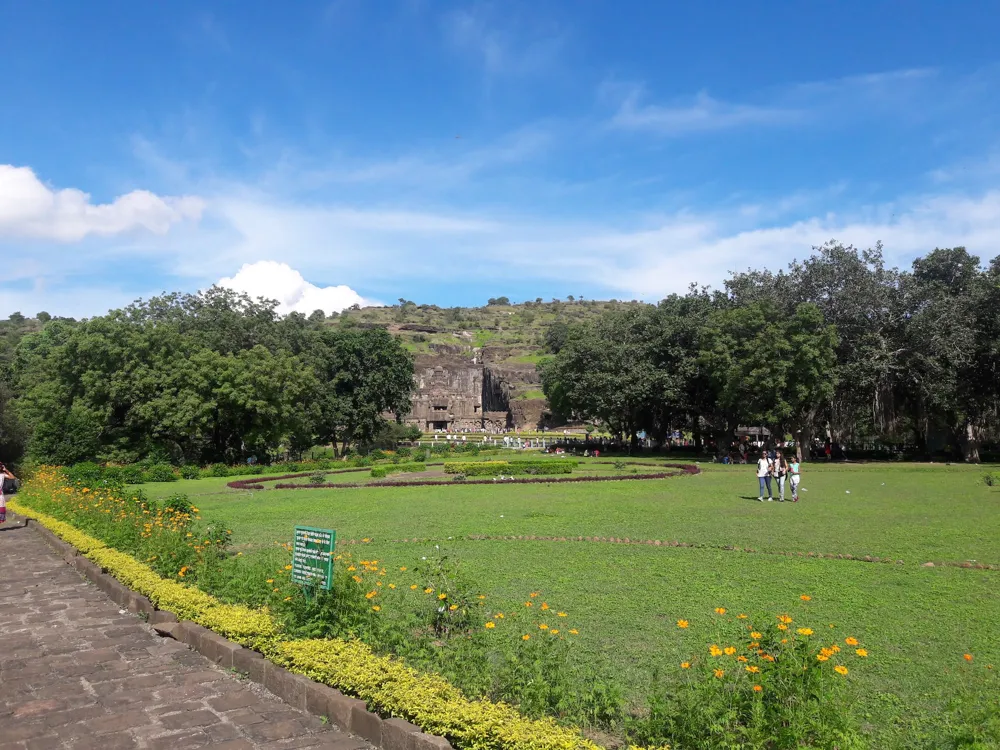Panchvati, a significant and mythologically enriched area within Nasik, Maharashtra, holds a special place in the Indian cultural and historical landscape. Its name, 'Panchvati', is derived from the Sanskrit words 'Panch' meaning five, and 'Vati' meaning garden, indicating the area's connection to nature and spirituality. This region is famously linked with the epic Ramayana, where Lord Rama, along with Sita and Lakshman, is believed to have spent a considerable part of their exile. Today, Panchvati attracts visitors not just for its religious significance but also for its natural beauty and serene environment. Panchvati's landscape is marked by ancient temples, ghats (river steps), and lush greenery, offering a tranquil retreat from the hustle and bustle of city life. The Godavari River, India's second longest river, flows gently through Panchvati, adding to its mystical charm. Numerous temples, including the Kalaram Temple, Goraram Temple, and Sita Gufaa, are situated in this area, each narrating a tale from the Ramayana. These temples are architectural marvels, showcasing the intricate craftsmanship of the era. The famous Kumbh Mela, one of the largest religious gatherings in the world, is held here every twelve years, drawing millions of pilgrims and tourists. While Panchvati is primarily located in Nasik, its cultural influence extends to regions like Goa. Goa, with its own rich tapestry of history and culture, shares a spiritual connection with Panchvati. This is evident in the similar architectural styles seen in some of Goa's temples and the shared religious festivities. The intermingling of cultures is a testament to India's diverse and inclusive heritage. The architecture of Panchvati is a splendid representation of ancient Indian artistry, deeply rooted in religious and cultural traditions. The temples in Panchvati display a unique blend of architectural styles, predominantly influenced by the Maratha and Mughal eras. Intricate carvings, towering spires, and grandiose structures are characteristic of these temples. The Kalaram Temple, for instance, stands as a testament to the architectural brilliance of the bygone era with its black stone structure and gold-plated copper dome. The architectural landscape of Panchvati is not limited to its temples. The Ghats, which line the Godavari River, present a scenic and architectural marvel. Panchvati's ghats, with their steps leading down to the river, are used for various religious ceremonies and provide a glimpse into the daily spiritual life of the locals. During sunrise and sunset, these ghats turn into a palette of vivid colors, with the sky reflecting off the river's surface, creating a mesmerizing view. The ideal time to visit Panchvati is between October and March when the weather is pleasant. Summers in Nasik can be quite hot, making it less favorable for outdoor activities. Visitors are advised to dress modestly, especially when visiting temples. Traditional Indian attire is recommended but not mandatory. Respect local customs and practices to maintain the sanctity of the place. Don't miss out on trying the local Maharashtrian cuisine. Nasik offers a variety of traditional dishes that are both delicious and unique to the region. Panchvati offers a range of accommodations from luxury hotels to budget stays. Booking in advance is recommended, especially during religious festivals and the Kumbh Mela. Panchvati is well-connected by road, rail, and air. The nearest airport is in Mumbai, from where one can take a train or a bus to Nasik. Within Nasik, Panchvati is easily accessible by local transport including buses, auto-rickshaws, and taxis. Read More:Overview of Panchvati in Nasik, Maharashtra
Goa's Connection to Panchvati
Architecture of Panchvati
Tips When Visiting Panchvati
Best Time to Visit
Dress Code and Conduct
Local Cuisine
Accommodations
How To Reach Panchvati
Panchvati
Nasik
Maharashtra Goa
NaN onwards
View nasik Packages
Weather :
Label : Must Visit
Tags : Landmark
Time Required : Half a day
Entry Fee : Free
Planning a Trip? Ask Your Question
Nasik Travel Packages
View All Packages For Nasik
Top Hotel Collections for Nasik

Private Pool

Luxury Hotels

5-Star Hotels

Pet Friendly
Top Hotels Near Nasik
Other Top Ranking Places In Nasik
View All Places To Visit In nasik
View nasik Packages
Weather :
Label : Must Visit
Tags : Landmark
Time Required : Half a day
Entry Fee : Free
Planning a Trip? Ask Your Question
Nasik Travel Packages
View All Packages For Nasik
Top Hotel Collections for Nasik

Private Pool

Luxury Hotels

5-Star Hotels

Pet Friendly







